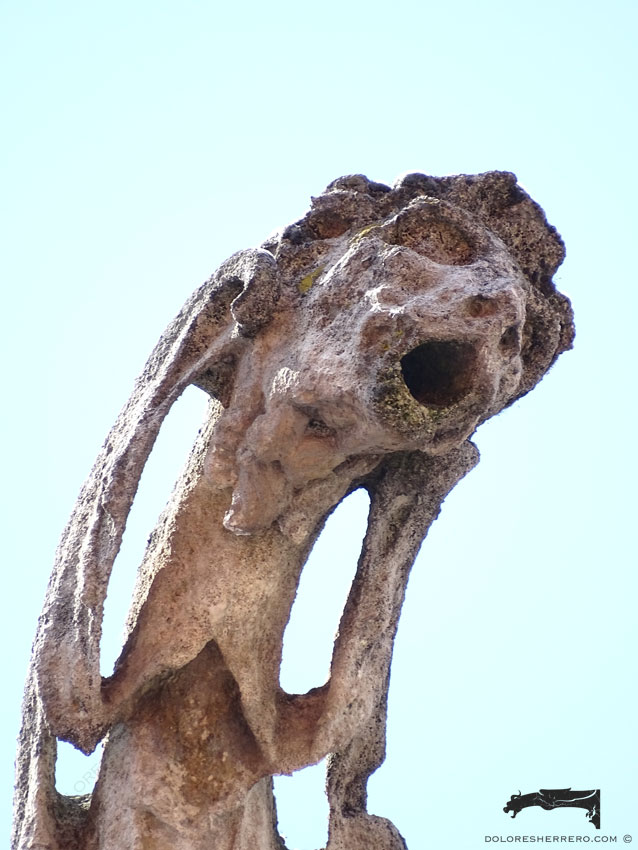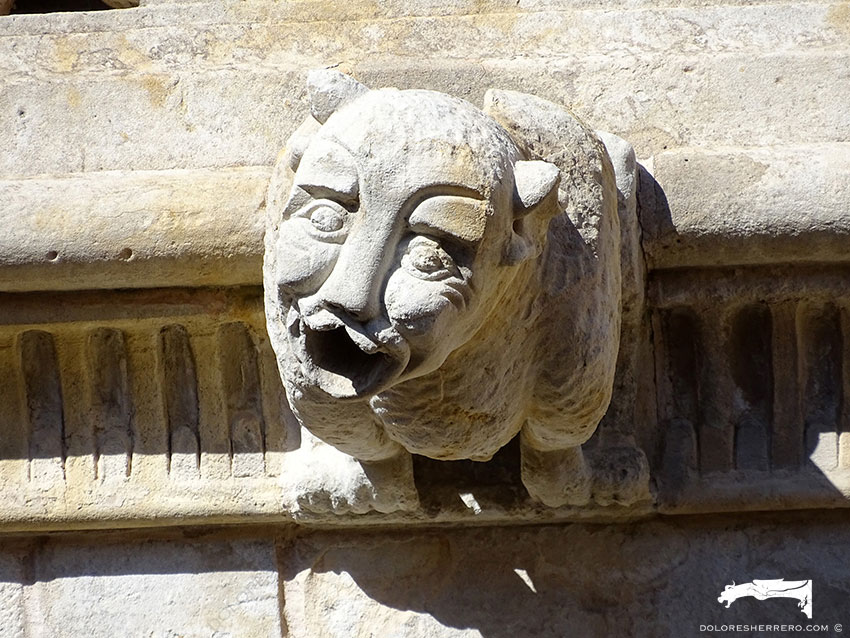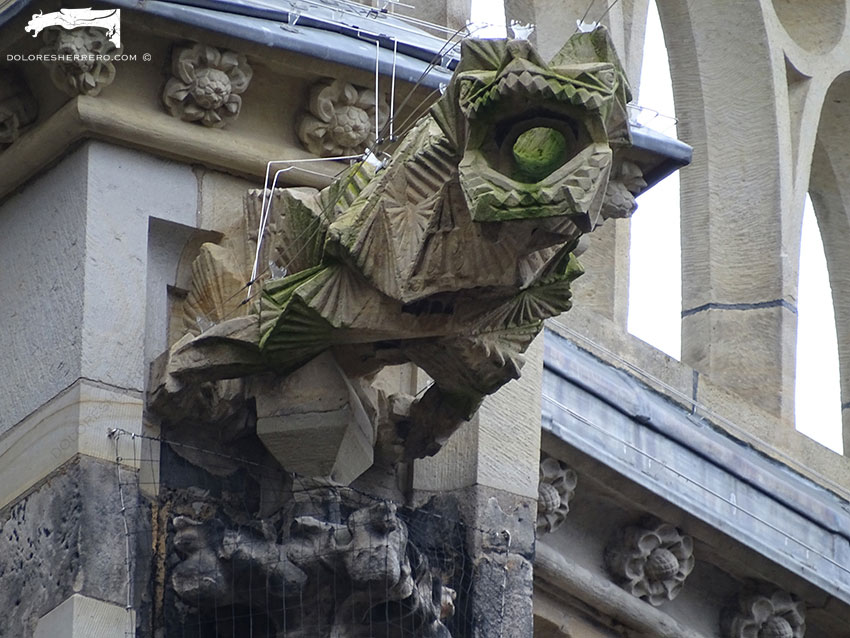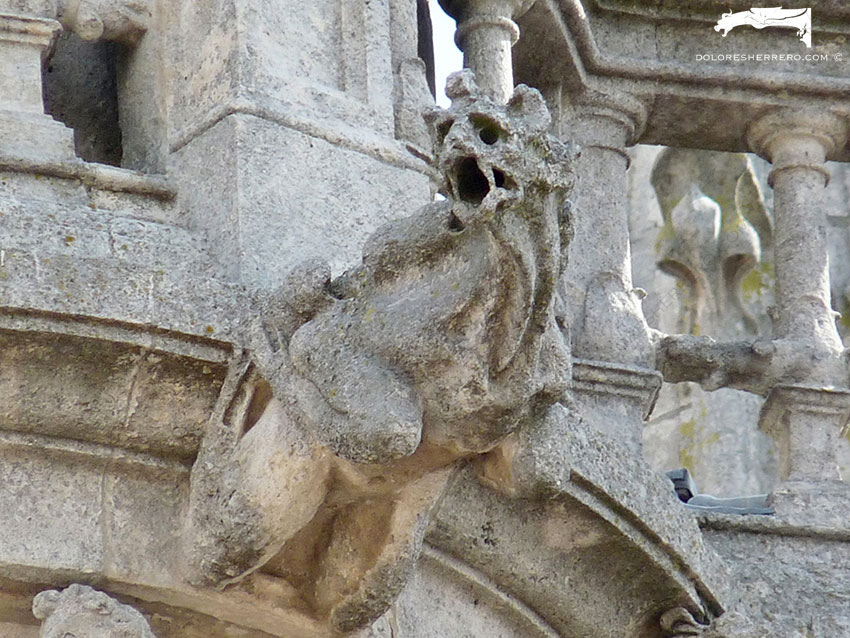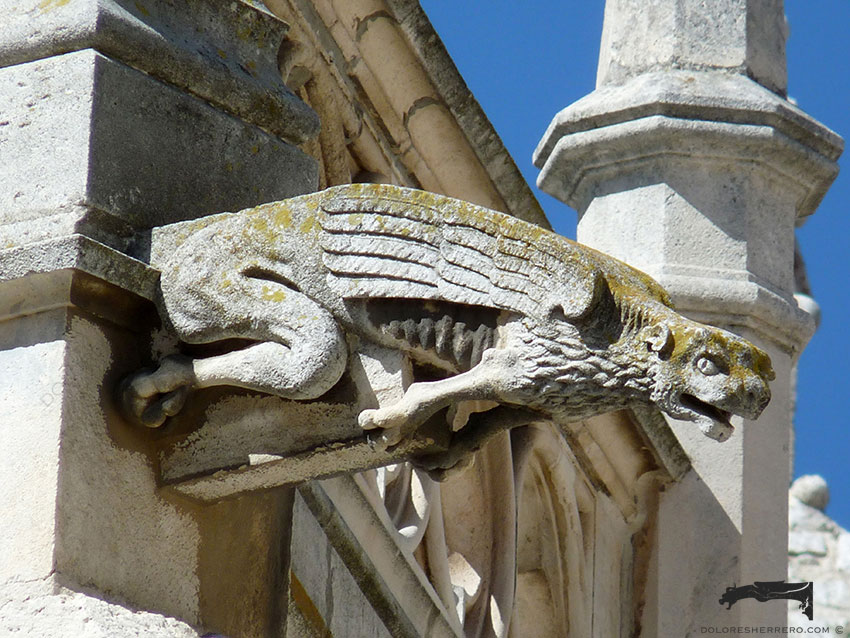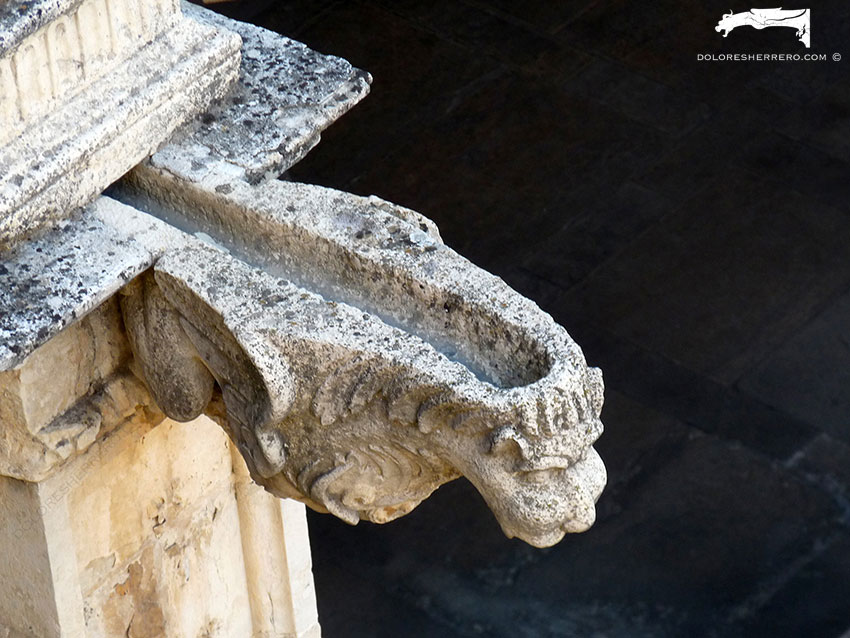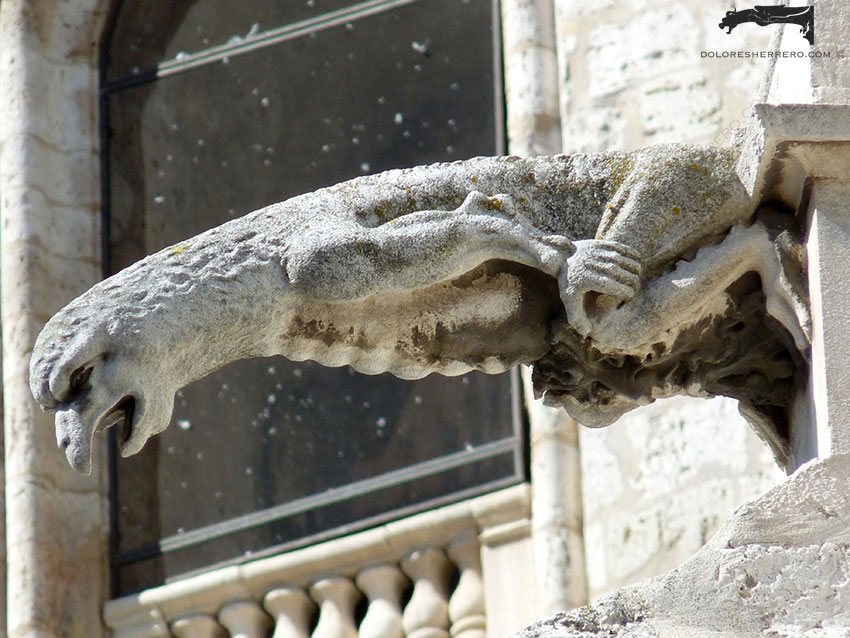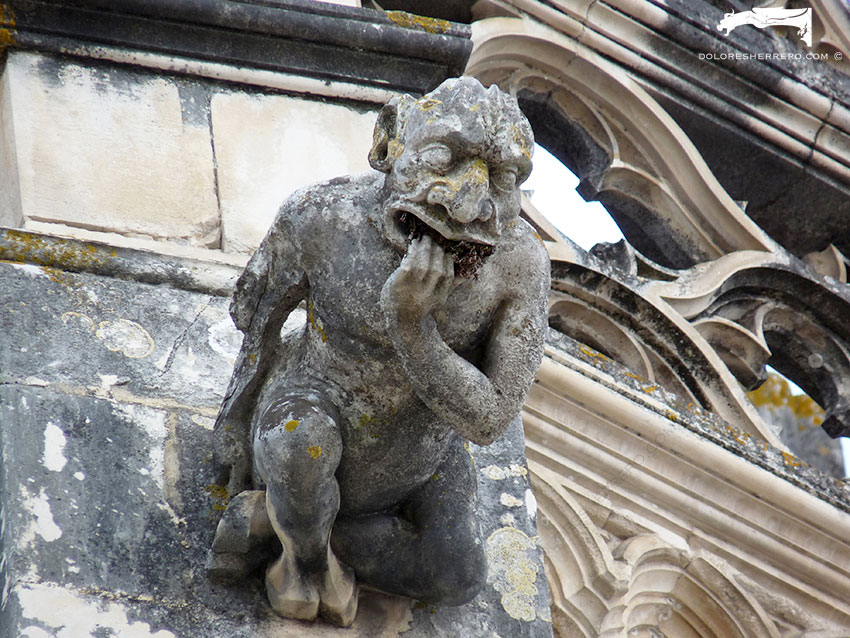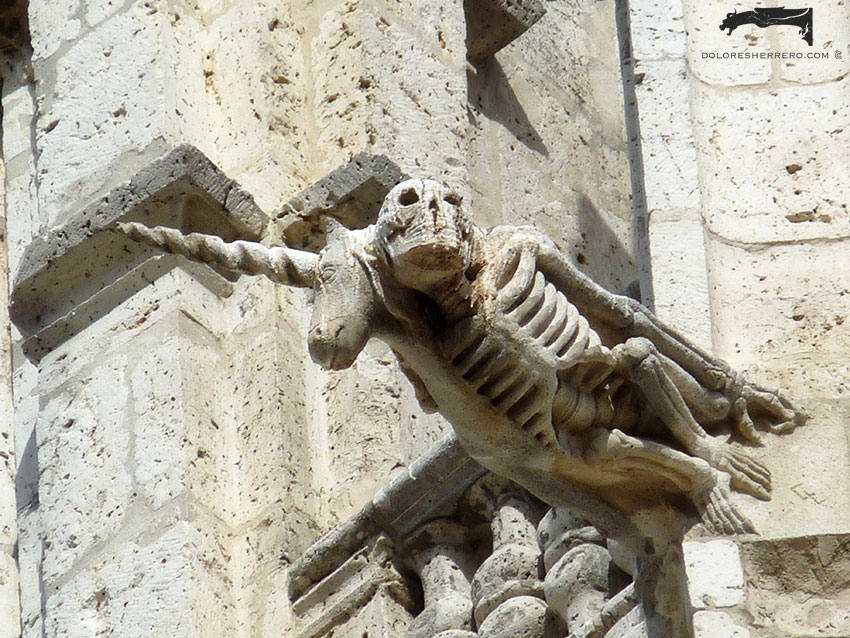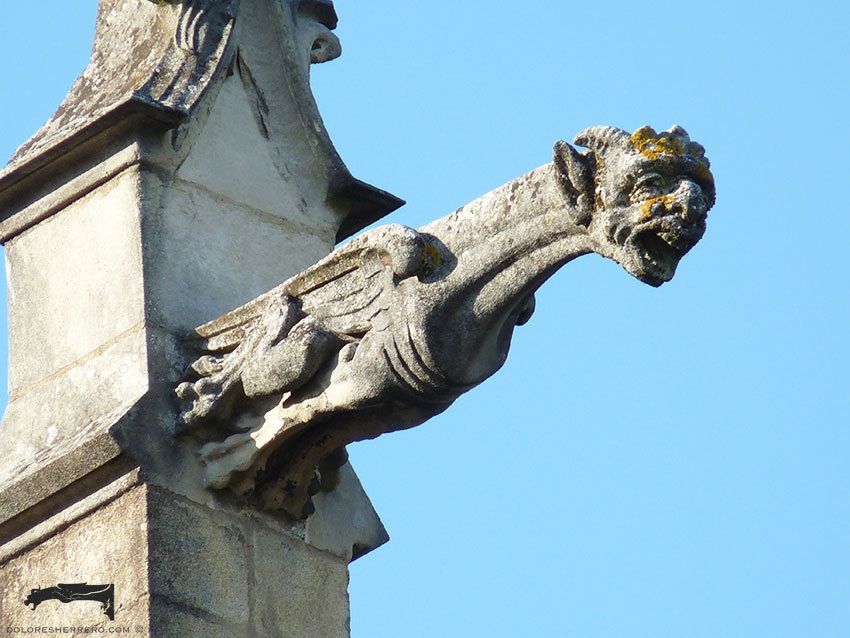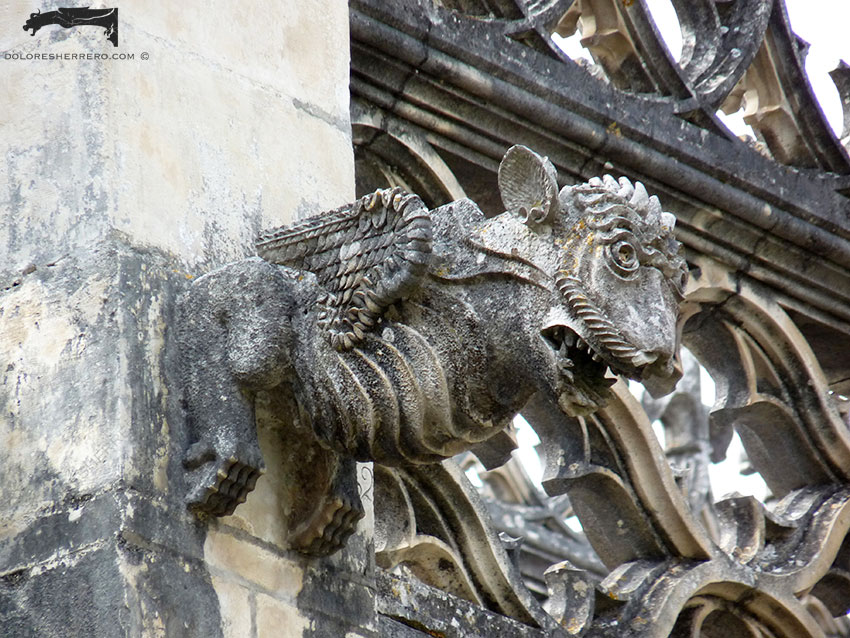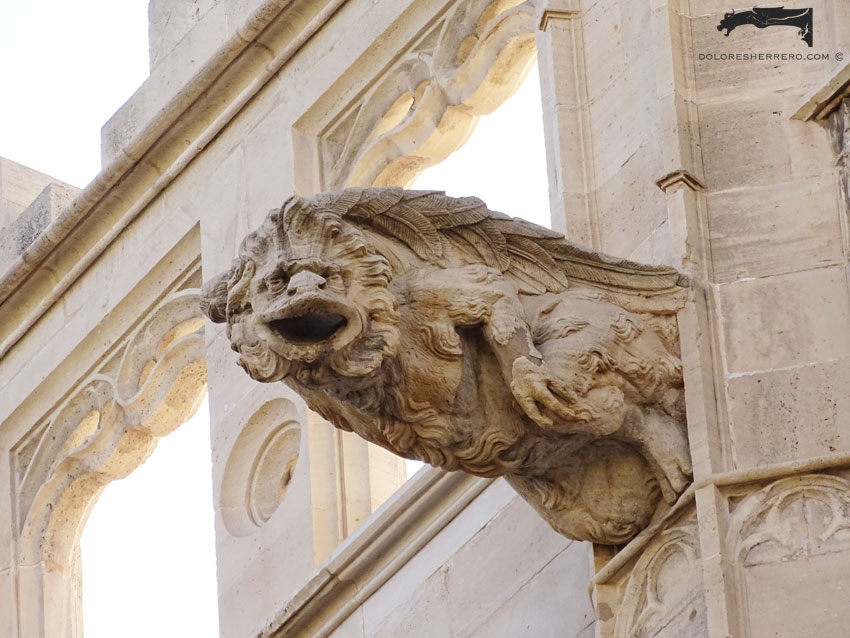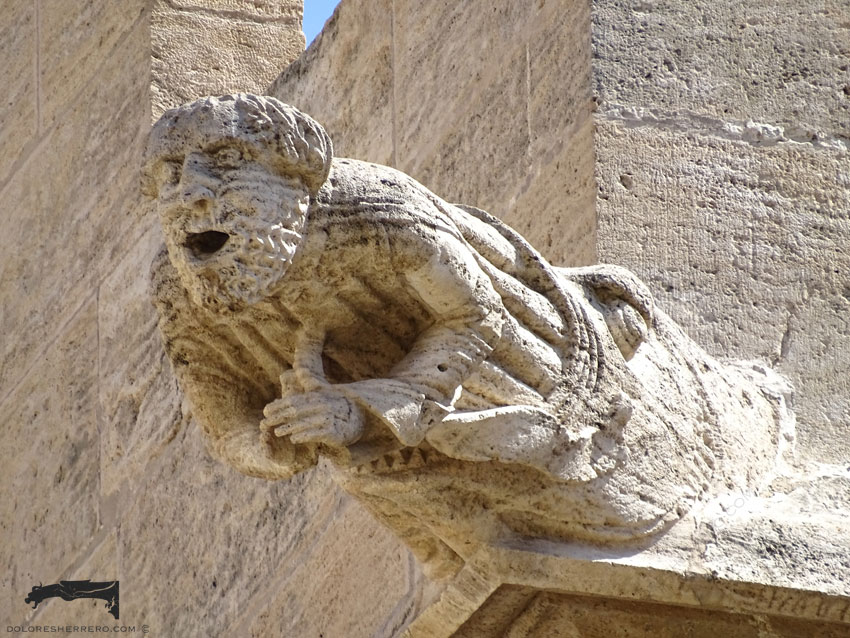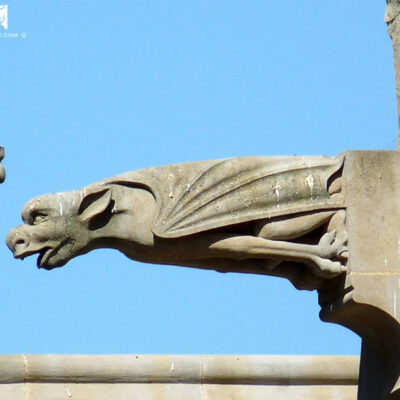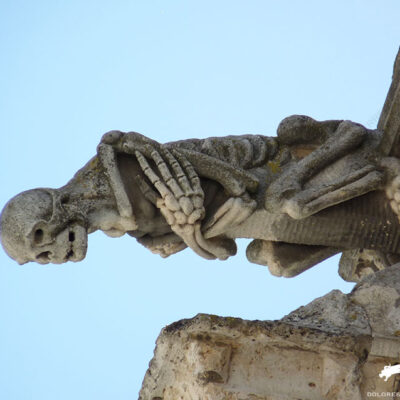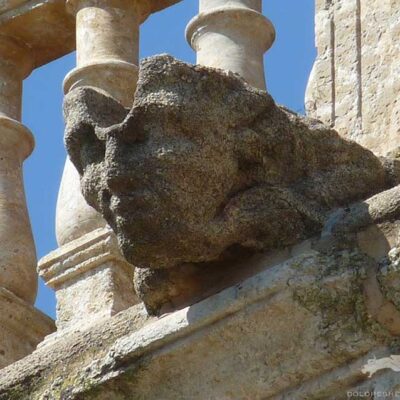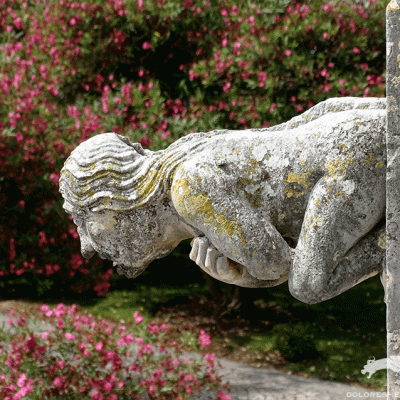Today we’re going to talk about something a little different. We’re not going to discuss types, features or symbolism, instead this post is devoted solely and exclusively to the maker, the creator, in short, the artist.
The gargoyle sculptor.
- Burgos Cathedral (Spain)
- Burgos Cathedral (Spain)
These are such imaginative, peculiar, disturbing, terrifying sculptures and yet they possess extraordinary artistic beauty, they have both fascinated and attracted people for centuries.
Although we now know that gargoyle depictions are the result of social and moral factors and customs of their particular period, these images showing all kinds of creatures, packed with fascinating detail and fruit of a tremendous imagination, can only reflect the sculptor’s absolutely boundless and even daring mood.
We don’t know for certain exactly what criteria were followed by Medieval gargoyle sculptors when they created these figures. A number of authors have put forward theories on the subject. Rebold Benton, for example, says that sculptors may have used gargoyles as a way of signing their work, personalising it, as gargoyles gave the sculptor the chance to create something deeply personal and outside the norms of both Medieval art and the anonymity of the trade association system in place during the Middle Ages.
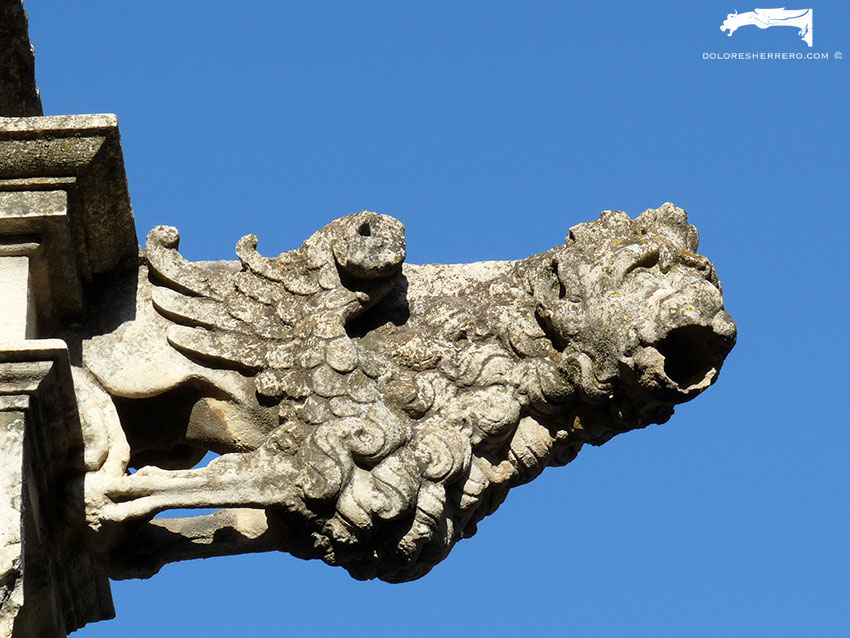
León Cathedral (Spain)
In Medieval monumental sculpture, at a time when sculptors were beginning to stand out and become aware of their profession, in an era when we start to see depictions of sculptors working with their tools, the profession of sculptor, although personal and unique, was always linked to a work of architecture. However, in the case of gargoyles, we could say that we’re looking at a clear case of artistic self-determination or autonomy by the sculptors because of that unbridled demonstration of imagination, producing fabulous and unconfined creations.
Although we can’t say for sure that gargoyle sculptors strictly followed an iconographic programme like other parts of a cathedral, this was a considered set of figures executed by master stonemasons, architects and sculptors, whose stonework was closely linked and who did not only seek architectural harmony but perhaps also a meaning and a transcendence beyond the purely aesthetic and formal.
What can apparently be surmised from this is that, as we have already said, gargoyles seem to pour boundlessly from the sculptor’s imagination as a response to the rules and commissions governing sculptors in the Middle Ages. This accounts for the huge variety and originality, with endless combinations of figures. An explosion of fantasy and creative freedom by the artist, which has continued throughout time.
- House of Shells (Salamanca, Spain)
- Aachen Cathedral (Germany)
- Ávila Cathedral (Spain)
- Burgos Cathedral (Spain)
Referring to the gargoyles that we, as passers-by, can’t see, in his text on the proximity of sculptural decoration in architecture, Ruskin (1819-1900) says that, “if the animal form be in a gargoyle, incomplete, it will have an abstract content with suggestive and symbolic forms. But if it is an entire animal, it is placed much further than the eye can reach and worked in a fine material it can achieve the highest possible perfection”. According to him, this idea confers nobility on the architectural work. The same author says that “whenever a building is constructed, certain parts that are a continuation of others forming decoration are hidden from view, the decoration should not stop in those parts. Its existence is believed: it should not be deceitfully done away with. […] If an order of decoration must be at the same time close and far away, be careful to make the execution as daring and as crude where it is visible as where it is further away, so the viewer realises what it is and what it is worth. […] Sculpture does not consist of carving a form in stone but rather carving the effect“.
These last few words clearly express the essence of the gargoyle.
- Palencia Cathedral (Spain)
- Burgos Cathedral (Spain)
- León Cathedral (Spain)
- Palencia Cathedral (Spain)
There are several theories on the sculptor’s working procedure. True Gasch, for example, argues that gargoyles may have been carved in situ and in blocks already placed in the walls. Williamson also says that as there are no sketches made by Gothic sculptors, the most likely scenario is that most of the monumental sculpture carving was done directly on previously marked stone.
Having been able to examine gargoyles at close range and observe details that can’t be appreciated at a distance has meant I can highlight a major feature, which is the attention to detail and perfectionism of the carving of animals (real and fantasy), often with incredibly accurate anatomy. This fact reveals that gargoyle sculptors possibly had to consult bestiaries and literature for the fabulous, mythological beings as well as zoological treatises for animal anatomy, a subject that belonged to encyclopaedias that described not only zoology but also human anatomy and botany. This could be telling us that these sculptors knew about these kinds of books and manuals.
It’s likely that sculptors used preliminary sketches of the figures they planned to carve, some of which can be seen in documentary sources like the Album of Villard d´Honnecourt (13th century). At first, you might think that these drawings or sketches had been made by the sculptors themselves. However, it’s also possible that they received the drawings from other artists or draughtsmen in their own or someone else’s workshop. The collaboration between artists probably extended to models as well. The sculptors either completely adhered to the sketches ― their own or someone else’s ― to carve them in the stone, or they used sketches made by other artists as a basic guide but making changes and expressing their own artistic personality and imagination in their carvings.
- Batalha Monastery (Portugal)
- Palencia Cathedral (Spain)
- Limoges Cathedral (France)
- Batalha Monastery (Portugal)
Observing gargoyles allows us to say that stone talks and reveals, through form, texture, weathering, style and the figure itself and its various parts, an era with its own forms of art, its own attitude and its own ways of thinking and living.
We don’t want to finish without once again emphasising that the gargoyle is a magnificent reflection of the artist’s creative freedom and imagination. The infinite combination of forms and beings suggests that artists poured out all their feelings in an extraordinary and enviable freedom to carve a whole host of possibilities and fantasies into the stone.
- Palma de Mallorca Lonja (Spain)
- Valencia Lonja (Spain)
Bibliography consulted
REBOLD BENTON, J., “Gargoyles: Animal Imagery and Artistic Individuality in Medieval Art”, Animals in the Middle Age. A Book of Essays, 1996, pp. 147-165.
RUSKIN, J., Las siete lámparas de la arquitectura, Barcelona, Editorial Alta Fulla, 1997.
TRUE GASCH, W., Guide to Gargoyles and Other Grotesques, Washington, Washington National Cathedral, 2003.
VILLARD DE HONNECOURT, Album de Villard d´Honnecourt, architecte du XIIIe siècle: manuscript publié en fac-simile par J. B. A. Lassus/ouvrage mis au jour par A. Darcel, París, Léonce Laget, 1968.
WILLIAMSON, P., Escultura Gótica. 1140-1300, Madrid, Ediciones Cátedra, S. A., 1997.

Doctor of Art History and researcher specializing in the study of gargoyles.
I am Dolores Herrero Ferrio, and my thesis, “An Approach to the Study of Gargoyles of Gothic Cathedrals in Castilla and León”, is dedicated to the study of these fascinating figures.
If you like gargoyles and art history, you will also enjoy my book, “The Gargoyle and Its Iconography,” a book I have written with great care for those interested in the world of gargoyles.
I have created my own Encyclopedia of Gargoyles, a Gargopedia to share with you, where you will discover all the secrets and wonders of these enigmatic sculptures.
I hope you enjoy this Gargopedia as much as I have enjoyed creating it, and remember that each gargoyle has a story to tell, and here you will discover them all.
